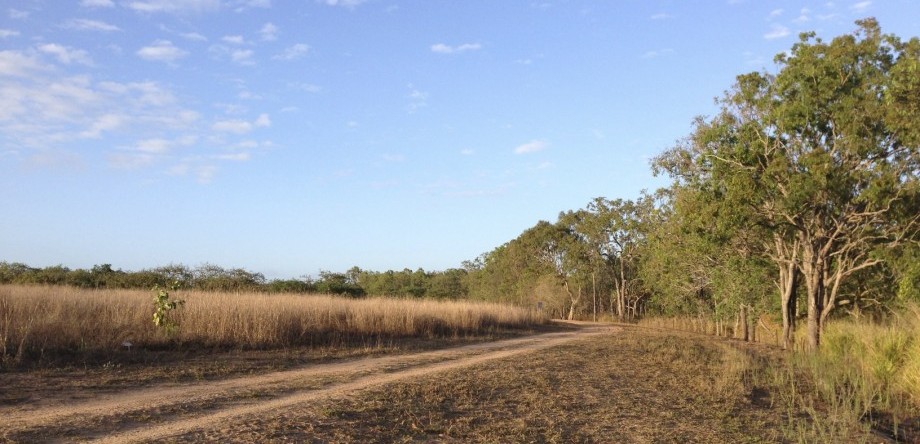 Right, back to a post about the trip! At the rate we are going you guys will all be still reading posts about our trip twelve months after we finished it!
Right, back to a post about the trip! At the rate we are going you guys will all be still reading posts about our trip twelve months after we finished it!
After two nights camping at Windjana Gorge and checking out Tunnel Creek we headed off to get a few kilometres of the Gibb River Road under our tyres. We were a bit nervous about what the road conditions would be like, but we were pleasantly surprised to find this stretch of road – about 1oo kilometres from Windjana Gorge to Bell Gorge – was pretty good. Corrugated and mostly dirt but it looked like it had been very recently graded so we travelled along with no problems. It was hard to bypass Lennard Gorge and the Mt Hart Homestead, but as we only had a week we had to be selective with where we stopped on the Gibb. We had decided that this was just to be a ‘practice run’ Gibb River Road trip and we will come back and do it properly one day!!
This stretch of the Gibb was quite scenic – with some lovely spots to stop and check out the views.
We had decided that Bell Gorge would be our lunch time stop, but we didn’t realise that it was actually 39km in to the Gorge along the access road off the Gibb River Road. This road was actually pretty rough and there are a couple of creek crossings along the way which we didn’t know about either. They were quite shallow when we went through so no problems and a bit of excitement for us as they were Karen Camper’s first water crossings!
We unhitched Karen Camper at the entrance to the Bell Gorge Campsite (called Silent Grove) as we thought the road was getting quite rough and we weren’t sure what parking there would be at the Gorge entrance. We were really glad we did this as the road did get more corrugated (it was another 10km’s from the campsite to the gorge) and the car park at the Gorge is really quite small – it would have been difficult to park the camper down there. The Silent Grove campsite looked quite nice – very dry and dusty but some shade and amenities so you could easily have a few nights there. We then had a quick bite of lunch and headed off for the short 3km return walk into the gorge – yes dragging a few reluctant kids again for another walk!
It was an easy walk in to the Gorge although it was quite hot walking in the middle of the day! We were glad to have a swim when we got there! The water in the swimming hole at the bottom of the water falls was freezing!! But we did all get in eventually – even me! Be warned though – the edge going in to the water is very slippery and slimy – we all had big slips going in!! The pools at the top of the gorge are really lovely and not as cold as the bottom pool – they would make a great spot to waste away a few hours soaking in the sun and water. The climb down to the water fall pool is very steep but our kids made it no problems – their walking skills have definitely improved heaps over the duration of the trip!
When we first arrived at the waterfall pool at Bell Gorge there was a tour bus of people there but they left shortly after we arrived (I’m sure we didn’t scare them off – we didn’t smell that bad!) and we had the place pretty much to ourselves – it was heaven! We were definitely glad that we got to see this spot! After about an hour swimming and relaxing we headed back to pick up the camper and push on to our campsite for the night at Manning Gorge which was about another 80km’s along the Gibb River Road once we had got back out off the 40km stretch of the Bell Gorge access road. Once again we had to reluctantly drive right past Adcock Gorge and Charnley River Station, with a promise of ‘next time’. We stopped at the Barnett Roadhouse and purchased our camping permit for the next two nights camping at Manning Gorge. It was of course ‘ice-cream o’clock’ and we thought we all deserved one so we bought those and a souvenir stubby cooler too!
Our time at Manning Gorge will be our next post. So, who has stopped at the places we missed along the way from Windjana Gorge to Manning Gorge? C’mon then, make us jealous, tell us what did we miss out on???























Recent Comments